Search Results for Tag: Icefall Doctors
Same route as in the accident year 2014
Has the memory of the Everest tragedy in 2014 faded so quickly? According to the Kathmandu-based newspaper “The Himalayan Times”, the “Icefall Doctors” have relocated the route through the Khumbu Icefall for the upcoming season to the left side of the ice labyrinth, just below the ice-loaded West Shoulder. On 18 April 2014, an ice avalanche had swept down from there and killed 16 Nepalese climbers. In spring 2015 (this season also ended prematurely due to the devastating earthquake in Nepal) and in 2016 too, the Sherpas, who were responsible for securing and maintaining the route through the Icefall, had chosen a variant on the right side.
![]() read more
read more
An Icefall Doctor himself
At the moment Alex Txikon may feel on Mount Everest a bit like Edmund Hillary. Like the first ascender from New Zealand and his companions in 1953, the Basque must play an active part in finding a way through the dangerous Khumbu Icefall above Base Camp and in carrying material needed to secure the route. For example aluminium ladders to cross the deep crevasses in the Icefall. With a weight of about five kilograms, such a ladder is not too heavy but bloody bulky while climbing through the ice. Real back-breaking work, as the video shows which the 35-year-old sent today from Everest Base Camp:
As reported, Alex, along with his Spanish countryman Carlos Rubio, wants to scale Mount Everest in winter, for the first time since 1993 – without bottled oxygen. The two climbers and nine Sherpas first have to make their way through the dangerous Icefall. Txikon has estimated this work for up to four weeks.
Pretty exclusive experience
As in Hillary’s days, the Spanish expedition is currently the only one on the highest mountain on earth. What a contrast to spring, when year after year several hundred mountaineers from dozens of commercial expeditions turn the Base Camp into a small tent town!
When the clients arrive there at an altitude of 5,300 meters in April, usually the so-called “Icefall Doctors” have already prepared and secured the way through the Icefall. This team of eight Sherpas also ensures that the route remains accessible throughout the climbing season until its end early June. The highly specialized Sherpas are selected and paid by the Sagarmatha Pollution Control Committee (SPCC), an organization that originally only cared about the environmental protection in the National Park around Mount Everest. Since 2000, the SPCC has also been responsible for the route through the Khumbu Icefall on behalf of the Government of Nepal. In spring 2014, 16 Nepalese climbers were killed in an avalanche in the Icefall.
Even if it turns out that Alex Txikon is not able to reach the summit at 8,850 meters this winter – his experience of working as a non-Sherpa as Icefall Doctor is pretty exclusive.
Mingma Sherpa: “In the end price matters”
The upcoming spring season on Everest casts its shadows before. Ten “Icefall doctors” were sent to the Base Camp on the Nepalese side of the highest mountain on earth to prepare the route for the commercial expeditions. In the past two years, there had been no summit successes from the south (I deliberately ignore the “success” of Chinese climber Wang Jing and her Sherpa-Team in 2014 who had been flown to Camp 2 by helicopter). In 2014, the spring season had prematurely ended after an ice avalanche in Khumbu Icefall had killed 16 Nepalese climbers. In 2015, the 25 April earthquake had triggered a huge avalanche from Pumori that had hit Everest Base Camp and killed 19 people.
On Monday, the Nepalese cabinet – at last! – gave green light for the extension of the 2015 climbing permits by two years. “It is a welcome move from the government that we hope will help bring back the climbers to the mountains”, said Ang Tshering Sherpa, president of the Nepal Mountaineering Association. But it might be too late for many of the about 800 climbers who got a 2015 permit, including 357 Everest aspirants, to return already this spring.
I asked Mingma Gyalje Sherpa about the upcoming season. The 29-year-old, who has already climbed seven eight-thousanders and recently made headlines by solo climbing the difficult West Face of 6685-meter-high Chobutse for the first time, is head of the Kathmandu based expedition and trekking operator Dreamers Destination.
Mingma, the spring season is around the corner. What do you expect, especially on Mount Everest?
![]() read more
read more
With nine finger stumps to the top of Everest?
It has gone out of style to climb Mount Everest in fall. This happened even though some of the most spectacular summit successes on the highest mountain in the world have been made in the post-monsoon period: Remember only the first ascent through the Everest Southwest Face by the British Doug Scott and Dougal Haston in September 1975 or the success of the US-American Carlos Buhler, Kim Momb and Lou Reichardt via the East Face in October 1983. However, the climbing season has moved more and more into spring since commercial expeditions have taken over on Everest – due to higher temperatures compared to fall and to the usually lower risk of avalanches. Since 2000, only 36 summit successes have been recorded in September or October – next to nothing compared with over 5,000 ascents in spring since the turn of the millennium. The last ascent to the top of Everest in fall dates from five years ago: In October 2010, the American Eric Larsen and five Sherpas reached the highest point at 8,850 meters. This fall, there will be another attempt to climb Everest from the Nepalese south side. According to the “Himalayan Times” the so-called “Icefall Doctors” – a group of high specialized Sherpas – arrived at Base Camp in order to fix a route through the Khumbu Icefall.
![]() read more
read more



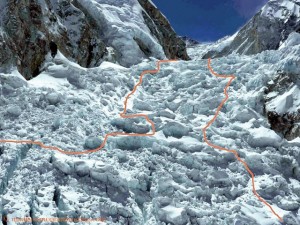

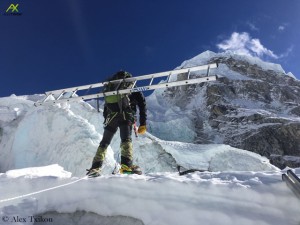
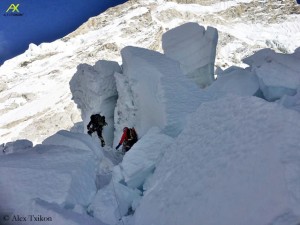
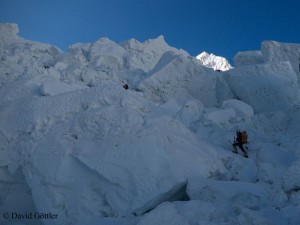
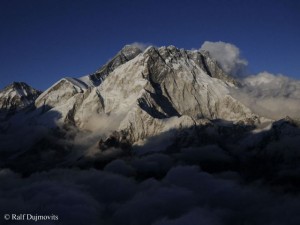

Feedback